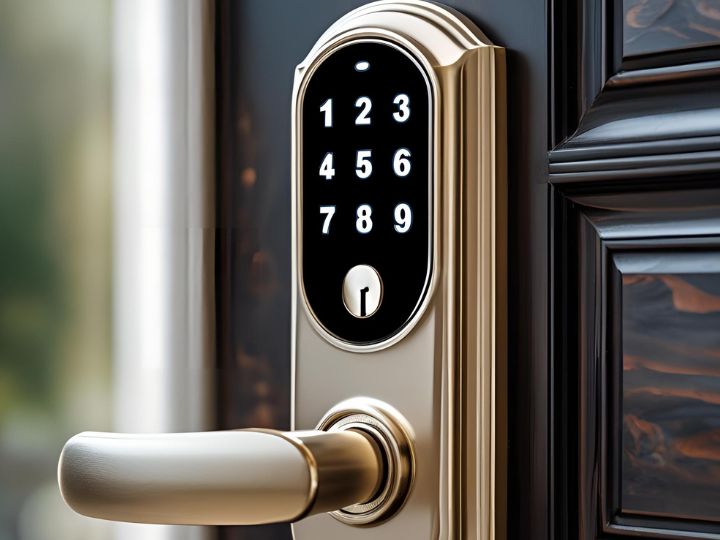Smart Lock Maintenance and Troubleshooting Tips for Perth Residents
Installing digital locks offer a secure and convenient way to protect homes and businesses. They replace traditional keys with code or card access, making it easier to control who can enter a property. This reduces the risk of lost keys or unauthorised copying.
Professional installation ensures the digital lock works correctly and provides maximum security. Skilled technicians can fit the lock quickly and make sure it is compatible with the door type.
Many people choose digital locks for their modern features, such as remote access or temporary entry codes. These services often include advice on the best lock for a specific need.
Types of Digital Lock Installation Services In Perth
Digital lock installation services vary based on property type and user needs. These services cover secure fitting for homes, businesses, and advanced smart systems that combine convenience with safety.
Residential Digital Lock Installation
For residential lock installation focuses on ease of use and enhanced security. The services include fitting keypad locks, fingerprint sensors, and keycard systems. These enable homeowners to control access without traditional keys.
Installers ensure locks are properly set up on doors, gates, and even garages. They also provide guidance on battery maintenance and troubleshooting common issues to keep security reliable.
Digital locks can integrate with home security systems or allow remote access via a smartphone app. This makes managing who enters the property simple and flexible for residents.
Commercial Digital Lock Solutions
Commercial properties need robust digital lock solutions that manage multiple users and high traffic. Installation services cover electronic keypad locks, card readers, and biometric systems tailored for offices, warehouses, and retail stores.
Technicians set up access controls with multiple permission levels, time-based restrictions, and audit trails. These features help businesses monitor entry and increase overall security.
The installation often includes system integration with existing security setups, such as CCTV or alarm systems. Support for maintenance and upgrades is typically offered to ensure long-term performance.
Smart Lock System Set-Up and Maintenance
Smart lock systems combine digital locks with network connectivity to offer remote control and automation. Services include installing locks that work with Wi-Fi or Bluetooth and configuring apps for user management.
The set-up process involves syncing locks with smartphones or home automation hubs. Installers also test the connectivity and security features to prevent hacking risks.
Maintenance covers software updates, battery replacement, troubleshooting connectivity problems, and may require occasional locksmith services to address technical malfunctions or system resets.
Choosing the Right Digital Lock
Selecting the right digital lock requires thinking about specific security needs, features that match those needs, and whether the lock fits the door. These factors help ensure the lock works effectively and is easy to use.
Assessing Security Needs
First consider the level of protection needed. For example, properties in high-risk areas may require locks with multiple authentication methods like PIN codes and fingerprint sensors.
Knowing who will access the lock is important too. A lock with simple keypad entry may suit a small family, but businesses might need audit trails or remote access features.
It is also worth evaluating whether the lock should integrate with other security systems. This boosts control and adds layers of protection.
Comparing Digital Lock Features
Digital locks come with different features. Key features to compare include:
- Access methods: Keypad, fingerprint, card, or app control.
- Power source: Battery life and backup options.
- Durability: Weather resistance and tamper alerts.
- Smart features: Remote locking, alerts, and integration with home systems.
The choice depends on convenience and security priorities. Batteries that last longer reduce maintenance. Alerts offer real-time updates. A clear list of features helps pick a lock that fits specific needs.
Compatibility With Existing Doors
Not all digital locks fit every door. Measure door thickness and check the lock’s mounting requirements first. Most digital locks suit doors from 35mm to 55mm thick.
The type of door material matters too. Metal and timber doors may need different installation methods. Locks designed for timber might not fix well onto metal surfaces.
Also, the door’s existing lock style (deadbolt, mortise, etc.) affects compatibility. Some digital locks replace the entire lock, while others work alongside existing hardware. Checking these details avoids installation issues.
Professional Installation Process
The process focuses on careful planning, precise fitting, and thorough testing. Each step ensures the lock works correctly and meets the client’s security needs.
Site Assessment and Preparation
The installer begins by examining the door type, frame, and surrounding area. This helps choose the right lock model and identify any adjustments needed.
Measurements are taken to confirm the lock’s size fits perfectly. The installer checks the door’s material and thickness for compatibility.
They also assess power sources if the lock needs electricity. Preparing the site includes clearing space and protecting surfaces from damage during installation.
Step-by-Step Lock Fitting
The locksmith marks drill points based on the lock template. They use specialised tools to drill holes for cables, screws, and mounting.
Next, the lock components are aligned and fixed to the door carefully. Screws are tightened to ensure the lock is stable without warping the door.
Wiring, if needed, is connected following the manufacturer’s guide exactly. The installer ensures cables are hidden and secured inside the door.
Testing and Demonstration
Once installed, the lock is tested multiple times for smooth operation. Functions like keypad entry, remote unlocking, and auto-locking are checked.
The installer shows the client how to use the lock features correctly. They often provide tips on battery replacement and problem-solving.
Finally, the installer confirms all settings match the client’s security preferences before finishing.
Maintenance and Upgrades
Proper care and timely improvements keep digital locks working well and secure. Regular checks, fixing small problems, and updating parts help prevent bigger issues later.
Routine Maintenance Services
Routine maintenance includes cleaning the lock and checking the battery life. Dust and dirt can block sensors and damage components, so wiping the keypad and housing regularly is important.
Batteries should be tested and replaced every 6 to 12 months, depending on usage. Some locks send low battery alerts, which should never be ignored.
Software updates may also be part of maintenance. These updates improve security and fix bugs that can affect lock performance.
Troubleshooting Common Issues
Common digital lock problems include unresponsive keypads, connection errors, and battery failure. Checking for dirt or moisture first can solve many issues.
If the lock does not respond to codes or cards, resetting the lock or reprogramming access codes often fixes the problem.
Battery failure is the most frequent cause of malfunction. Keeping backup batteries on hand helps avoid lockouts.
For persistent issues, consulting professional 24/7 locksmith Perth services is recommended rather than attempting complex repairs that could worsen the problem.
Upgrading Existing Digital Locks
Upgrading can enhance security or add new features. Replacing old batteries with long-life types boosts lock reliability.
Adding a smartphone app or integrating with smart home systems can increase convenience. These upgrades often require compatible lock models.
Reprogramming access codes periodically strengthens protection against unauthorised entry.
If a lock model is outdated, replacing the whole unit with a newer version may provide better security and options.
Troubleshooting
If a digital lock does not respond, the first step is to check the batteries. Weak or dead batteries are the most common cause of failure. Replacing them often solves the issue quickly.
If the lock still does not work, ensure the keypad is clean and dry. Dirt, dust, or moisture can interfere with the buttons. Using a soft cloth to clean the surface can help restore function.
When a lock fails to recognise a code, the user should double-check the code entered. If the code is correct but still not accepted, the lock may need to be reset following the manufacturer’s instructions.
Common issues and fixes:
| Issue | Possible Cause | Recommended Action |
| Lock won’t open | Dead batteries | Replace batteries |
| Buttons don’t respond | Dirt or moisture | Clean keypad, dry thoroughly |
| Code not accepted | Incorrect code or software | Verify code, reset lock if needed |
If problems persist after these steps, consulting a professional digital lock service is advised. Attempting complex repairs without expertise might cause further damage.


